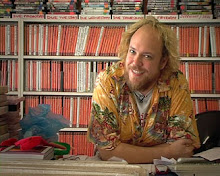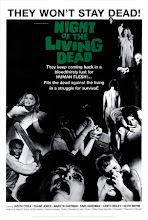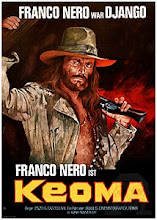
Back in the Seventies, Anita Bryant was a popular if milktoast chanteuse who doubled as a poster girl for

 It’s often been said this film encouraged an entire decade of
It’s often been said this film encouraged an entire decade of

 The Terrible Truth (1951) is an early and deliriously and sensationalist film on pot (“that’s jazz talk for marijuana”) as the slippery slope to the Big H. from Sid Davis Productions, the man who gave us the Stranger Danger classics Girls Beware and Boys Beware. A disturbingly mannish Mrs Howard parades her wayward teenage daughter Phyllis like a junk monkey, fresh out of cold turkey in the county jail and a six month nightmare “even Edgar Allan Poe couldn’t have improved on!” Her tale is a strangely familiar one: she started out smoking reefers with the anti-social crowd – you know, “the ones with no backbone”. Soon she’s marrying her middle-aged boyfriend Chuck, the lovespawn of Danny Kaye and William S. Burroughs, who turns her onto dope, and she ends up dealing to support her $30 a day habit. By the grace of God she lives to tell the tale, warning against a possible Communist conspiracy to hook
The Terrible Truth (1951) is an early and deliriously and sensationalist film on pot (“that’s jazz talk for marijuana”) as the slippery slope to the Big H. from Sid Davis Productions, the man who gave us the Stranger Danger classics Girls Beware and Boys Beware. A disturbingly mannish Mrs Howard parades her wayward teenage daughter Phyllis like a junk monkey, fresh out of cold turkey in the county jail and a six month nightmare “even Edgar Allan Poe couldn’t have improved on!” Her tale is a strangely familiar one: she started out smoking reefers with the anti-social crowd – you know, “the ones with no backbone”. Soon she’s marrying her middle-aged boyfriend Chuck, the lovespawn of Danny Kaye and William S. Burroughs, who turns her onto dope, and she ends up dealing to support her $30 a day habit. By the grace of God she lives to tell the tale, warning against a possible Communist conspiracy to hook
 LSD 25 comes from that magical moment in the history of the War On Drugs: 1967, the height of the Acid Scare. A befuddled population of non-hipsters were convinced the Russians were trying to put LSD in the country’s water supply, and Timothy Leary was a psychedelic Pied Piper leading the acid-soaked rat children out of Haigh-Ashbury to their doom. LSD 25 adopts a Devil’s Advocate disguise by letting the drug itself narrate the film (“everyone knows I’m called LSD for short…”), but clearly its deceptively benign commentary hides its true purpose. “It’s high time for the facts”, LSD says, and here they are: insanity and premature death, and a freakshow of gibbering hippies on heavy bummers. “Trip or trap?” it poses over a pounding soundtrack of anti-psychedelia, the Sixties equivalent of Christian metal. LSD simply shrugs. “That’s his problem, not mine.”
LSD 25 comes from that magical moment in the history of the War On Drugs: 1967, the height of the Acid Scare. A befuddled population of non-hipsters were convinced the Russians were trying to put LSD in the country’s water supply, and Timothy Leary was a psychedelic Pied Piper leading the acid-soaked rat children out of Haigh-Ashbury to their doom. LSD 25 adopts a Devil’s Advocate disguise by letting the drug itself narrate the film (“everyone knows I’m called LSD for short…”), but clearly its deceptively benign commentary hides its true purpose. “It’s high time for the facts”, LSD says, and here they are: insanity and premature death, and a freakshow of gibbering hippies on heavy bummers. “Trip or trap?” it poses over a pounding soundtrack of anti-psychedelia, the Sixties equivalent of Christian metal. LSD simply shrugs. “That’s his problem, not mine.”
Narcotics: Pit Of Despair (1967) is from the same proto-hippy period, a catch-all hysterical tome for its complicated times. From beer to a pot party and then straight into heroin hell, it’s the story of John Scott, a self-absorbed jock and born shirker who, failing exams and looking for kicks, goes to what pusher Pete tells him is a beer party. Before you can say “frathouse freakout” he’s seduced by Pete’s junky girlfriend into having just one puff of reefer – to “take a trip from squaresville”. Soon Pete has his hooks into John – once his defences are down and his character has crumbled, he introduces him to horse. Soon it’s dirty backrooms and eyedropper syringes as the music suddenly turns sinister, and the drugs-as-snake poison references (with all the inherent serpent-as-Satan suggestions) become relentless, as does the hysterical narration from a jive-quoting square. The barrage of clichés - “the trippers, the grass hoppers, the hip ones” – rolls endlessly off his NBC-trained silver tongue and continues right to the bitter end. End? There is NO END.
aka Wild For Kicks
Director
 The Beat Girl of the title is Jenny, absent art student and spoilt daughter of a distant father more interested in his model city than his new wife, a 24 year old French coquette named Nichole. Jenny spends all of her time looking for new kicks, shimmying to jazz and rock combos and hanging out with her “beat” friends at a
The Beat Girl of the title is Jenny, absent art student and spoilt daughter of a distant father more interested in his model city than his new wife, a 24 year old French coquette named Nichole. Jenny spends all of her time looking for new kicks, shimmying to jazz and rock combos and hanging out with her “beat” friends at a
 If it’s kicks you’re after, Beat Girl’s are of the restrained kind, thanks to its immovable British-ness, where barely a stiff upper lip moves let alone any other part of the anatomy. It’s a foreign culture, even it’s from
If it’s kicks you’re after, Beat Girl’s are of the restrained kind, thanks to its immovable British-ness, where barely a stiff upper lip moves let alone any other part of the anatomy. It’s a foreign culture, even it’s from
 Unlike American JD films of the period, there’s depth in the film’s characters and the cast is uniformly good, even Faith, and the ever-pouting
Unlike American JD films of the period, there’s depth in the film’s characters and the cast is uniformly good, even Faith, and the ever-pouting

























































































3 comments:
NICE Blog :)
We didn't get "She Shoulda Said No"
last Friday night. I was looking
forward to it. We received "Beat
Girl" which I really enjoyed. I
hadn't seen it for years. I could
remember Hills as being ravishing
(well I was only a teenager). She
was in a few shots (very few) but
now she just looked trashy to me.
I looked her up on IMDb and it said
she was born in Egypt - that would
explain her irritating accent. Boy,
her stepmother looked really trashy
too!! It was nice to see Oliver
Reed looking young and beautiful
and undebauched!!!
Great Review. I'm looking forward to screening this flick.
FYI: IMDB lists Beat Girl (aka Wild For Kicks!) as being released in 1959.
Post a Comment